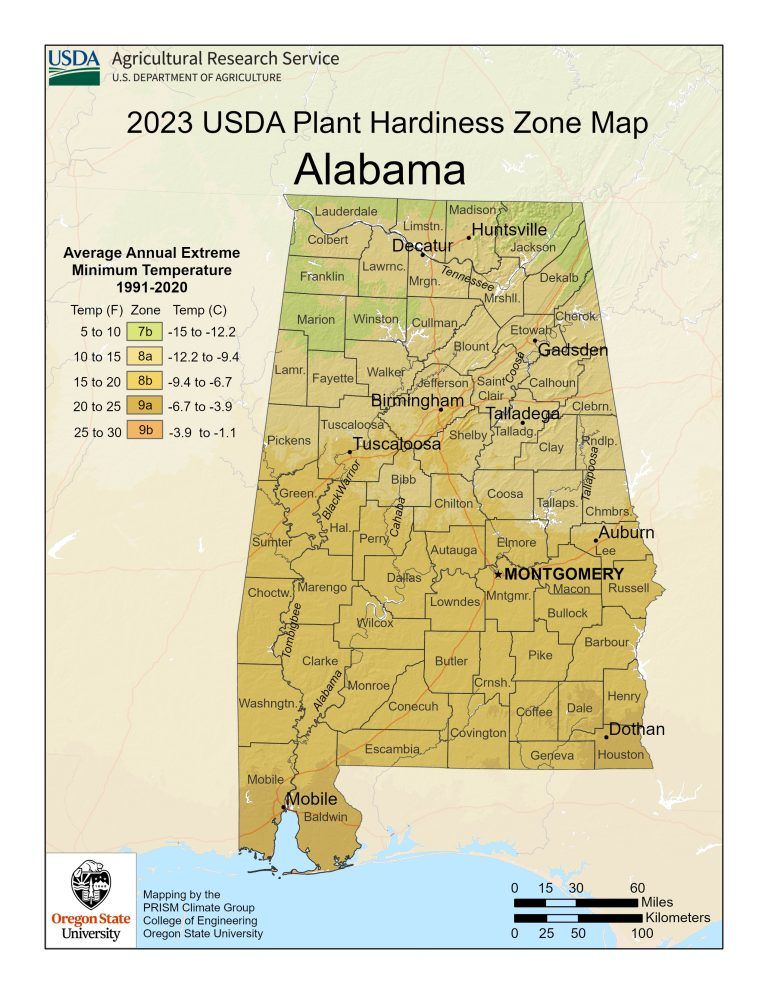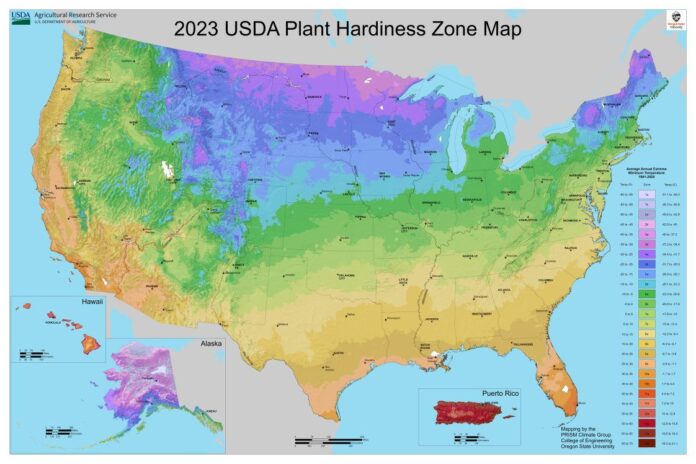AUBURN UNIVERSITY, Ala. — For the first time in more than a decade, the United States Department of Agriculture (USDA) released new hardiness zone maps. These new changes bring a new level of climate accuracy, allowing people to intelligently select plants that thrive best in their region. An Alabama Cooperative Extension System home grounds, gardens and home pests agent said this tool should prove fruitful for all Alabama gardeners.
Know your zone

Down to the street you live on, the 2023 USDA Hardiness Zone Map shares — in detail — what climate conditions plants need to thrive at a given location. The zones are measured in color-coordinated scale, ranging from extremely cold climates (1a) to warmer, tropical climates (13b). The map uses the previous 30-year average annual extreme minimum winter temperature to determine plant hardiness.
According to the last hardiness zone survey presented in 2012, Alabama’s zones ranged from 8a to 7a. The zones for 2023 have shifted to a warmer range from 9b in the coastal region to 7b in extreme north Alabama. The majority of Alabama is now zone 8a and 8b.
Brian Brown, Alabama Extension home grounds regional agent, said a decade’s worth of new data will exponentially improve planting decisions.
“This new version includes data collected from several thousand more weather stations throughout the U.S.,” Brown said. “This makes it much more accurate. The hardiness zones in Alabama have shifted north, which is an indication of the change of temperatures over the past 30 years.”
Microclimates
A microclimate is a uniform climate of a local site or habitat. These miniature biomes are everywhere, and something as small-scale as a backyard can have its own microclimate.
Brown said these small areas are something homeowners need to pay attention to, in addition to consulting the hardiness zone map
“The USDA hardiness zone map is an important tool in determining what plants you select,” Brown said. “But something homeowners also really need to pay attention to is the effect of microclimates as well. For example, plants growing on the southwestern side of a house may be exposed to extreme temperatures in the summer. And during winter, a north-facing side of the house may have more shade and possibly see more damage if we experience a harsh cold front.”
To get the most out of seasonal plantings, referencing this governmental resource is necessary for success. The USDA offers this hardiness zone map as the standard for gardeners and growers.
More resources
Sometimes, using large databases can be confusing. To assist with learning more about climate maps and what and when to plant, Alabama Extension agents are a phone call or short drive away. Find contact information for your county Extension office and experts near you through the Extension directory.
For more information about gardening and programming, visit the Lawn & Garden section of Alabama Extension’s website, www.aces.edu.
Copyright Humble Roots LLC, 2024. All Rights Reserved.























